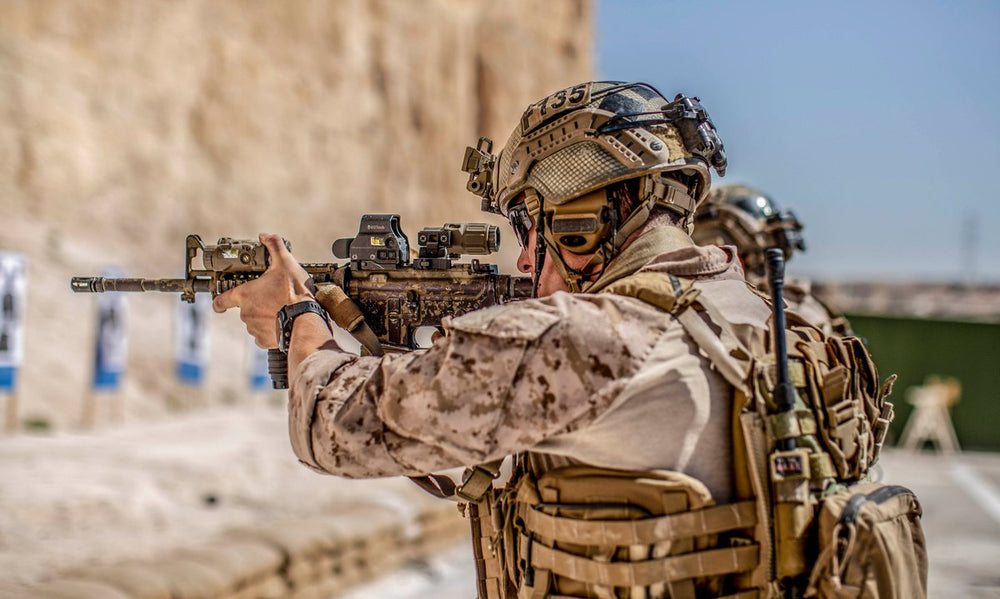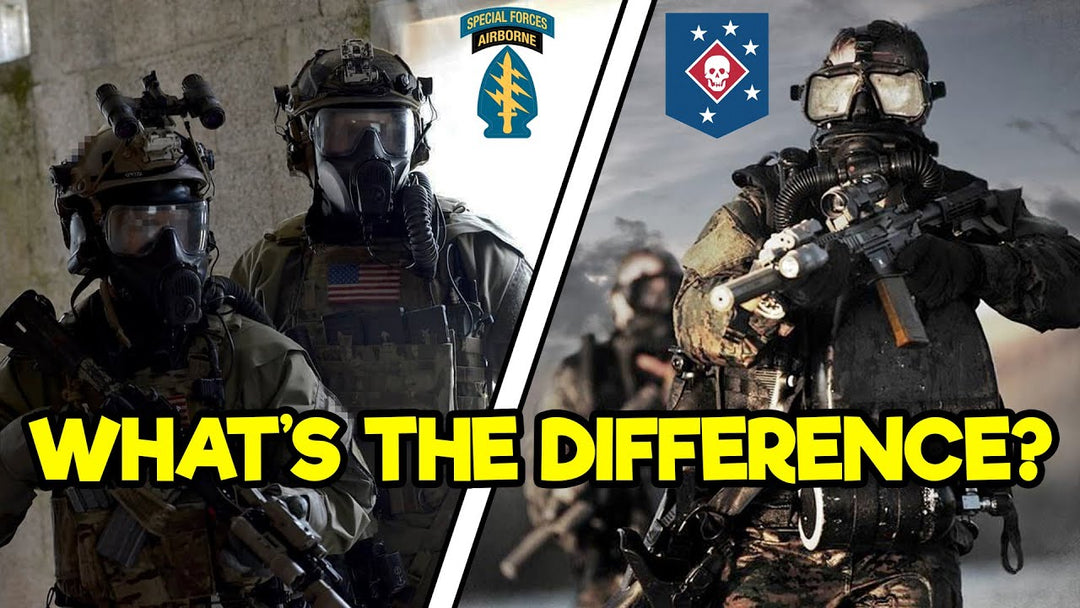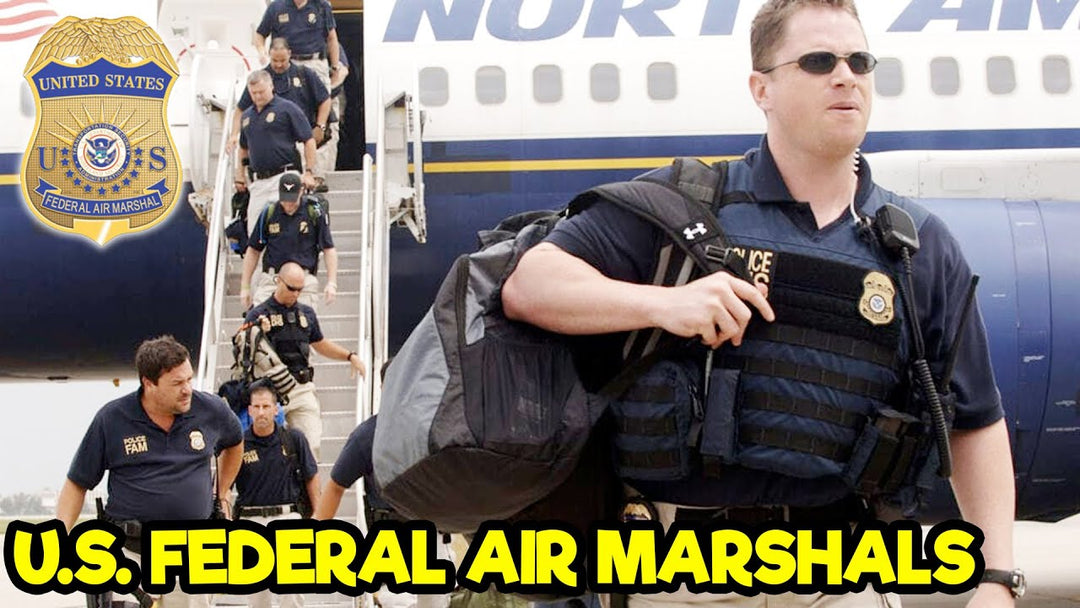Air Force Pararescuemen (PJs): The Guardian Angels of U.S. Special Operations

PJ’s are quite literally the guardian angels of the U.S. military. From downed pilots to special operators and even some civilians in certain circumstances, if you need to be saved, you can bet that a PJ can get the job done.
Air Force PJ’s have been risking their lives to save another for decades. As the most decorated enlisted field in the Air Force, their Medal of Honor, 12 Air Force Crosses, and 105 Silver Stars speak for themselves. There are several stories and accounts of PJ’s heroically saving personnel and sacrificing themselves, affirming their dedication and commitment to saving lives and self-sacrifice.
But what is an Air Force PJ? How are they so effective at saving lives? What makes them so legendary in the SOF community? And for those with the courage and ambition to take the journey to becoming one, what does it take?
Keep reading, and we’re going to answer all of those questions for you and much more in this blog post.
TABLE OF CONTENTS
AIR FORCE PJS: ORGANIZATIONAL STRUCTURE
AIR FORCE PJS: SELECTION AND TRAINING
AIR FORCE PJs: MISSION

When a civilian needs rescue, they call 911. When a Navy SEAL, Green Beret, or Army Ranger on a mission needs rescue, who do they call? Well, if you didn’t get the memo by now, they call the PJ’s. In fact, PJ’s are the only specialty in the military specifically trained and equipped to conduct conventional or unconventional rescue operations. Whether you’re shot down, isolated behind enemy lines, surrounded, engaged, wounded, or captured by the enemy, they will do whatever it takes to bring you home to fight another day.
PJ's are combat medics and rescue specialists, meaning that not only do they have to learn how to save lives, they've got to learn how to fight too. That’s what makes them unique in the SOF community; they put an emphasis on both their medical capabilities and their lethality. It comes with the job description: if you want to save people from dangerous situations, you have to be dangerous yourself. This is what enables them to operate in the full spectrum of personnel recovery.
Make no mistake, while a PJ is ready for almost anything that gets in front of them, if they could have it their way, they want to get in and get out and avoid any unnecessary confrontation. “No Fuss, no Muss” a PJ once said. Unlike other operators who “search and destroy,” PJ’s “search and save.” They’re just as accurate with their weapons as they are with their syringes, and just as skilled in taking lives as they are in saving them. They’re quite literally the jack of all trades and are often embedded in other SOF units for their medical and operator expertise.
AIR FORCE PJs: ORGANIZATIONAL STRUCTURE

Air Force PJ’s primarily operate in two distinct capacities in the Air Force: Rescue Squadrons and Special Tactics Squadrons. The Rescue Squadrons are where you see a majority of the PJ’s, where they standby and train constantly in all things search and rescue. The Special Tactics Squadrons are where you see them in more of an operator capacity. And believe it or not, some of the National Guard PJ’s are in squadrons where they’re tasked with saving civilians who get into sticky situations, such as those in Alaska.
AIR FORCE PJs: CAPABILITIES

Regardless of where they’re placed, PJ’s are renowned and utilized for their extensive medical capabilities. Each PJ is a registered paramedic walking out of the pipeline and constantly improves and perfects their medical knowledge as the needs and demands of the search and rescue missions evolve. To name a few, they learn minor field surgery, pharmacology, combat trauma management, advanced airway management, and military evacuation procedures. This is why so many SOF units want and need a PJ embedded with them: they’re the perfect addition with the skills they possess.
But don’t think SOF units are the only ones wanting to work with these elite warriors. Because of their expertise in helicopter operations, swiftwater rescues, mass casualty care, technical extrication, and medical care, they are a perfect fit as a primary assistance partner for FEMA, USAID, and other local-led disaster responses. Hell, even NASA uses them!
But PJ’s don’t just walk into the recruiting office this badass. In order to become a PJ, candidates can expect a long and grueling journey ahead. With that said, what does it take to become a PJ?
AIR FORCE PJs: SELECTION AND TRAINING

Nicknamed the “Superman School,” the pipeline to becoming a PJ is one of the longest in the entire U.S. military. As we discussed earlier, PJ’s are jacks of all trades. It takes a lot of time and effort to develop those skills that many service members will rely on in future missions. From start to finish, a PJ candidate can expect to take around 2 years before they don that maroon beret. They’ll attend courses ranging from jump school, dive school, free fall, SERE, medical courses, and the list goes on and on. But don’t think that a newly minted PJ who just got done with the pipeline is 100% ready to go running and gunning and saving lives. The pipeline is where they learn the fundamental building blocks of their foundation, and their training has only just begun.
Because of their broad skill set, they are continually engaged throughout their time as PJs to stay sharp on their skills. When you see a PJ, you’ll know they’re one of the best of the best, because the path to becoming a PJ weeds out around 80% of those who are up for the challenge. That’s one of the highest attrition rates in the entire U.S. special operations community.
The PJ’s don't just let anyone try out for their prestigious community. To even be considered, applicants must possess the minimum requirements laid out by AFSPECWAR recruiting and must be able to crush the IFT. Formerly known as the PAST, the Initial Fitness Test is one of the filters the PJ’s use to weed out those who aren’t in good enough shape. The IFT consists of two underwater swims, a surface swim, pushups, situps, pullups, and a mile and a half run. While there are minimum scores for most of these events, applicants must crush the minimums to even be considered. These high standards maintain the high bar that is set by the PJ community.
AIR FORCE PJs: CONCLUSION

At the end of the day, PJ’s are the embodiment of their motto, "These Things We Do, That Others May Live," They are willing to go anywhere, at any time, by whatever means necessary to retrieve and rescue those who need it.
PJ’s aren’t the only cool SOF job in the Air Force. We’ve done a blog post discussing other Air Force Special Operations jobs, go give it a look if you’re interested!
If you want to learn more about the military, law enforcement, or government entities, we have a YouTube channel dedicated to providing the best info out there, plus we have a growing list of blog posts as well. Click the links to take you to them!
General Discharge is a veteran-owned, veteran-operated organization that is dedicated to providing the best U.S. Military and Law Enforcement information. With over 250 YouTube videos, over 45 million views, and hundreds of thousands of followers, we have contributed to the success and knowledge of both the current and future generations of service members.






Leave a comment